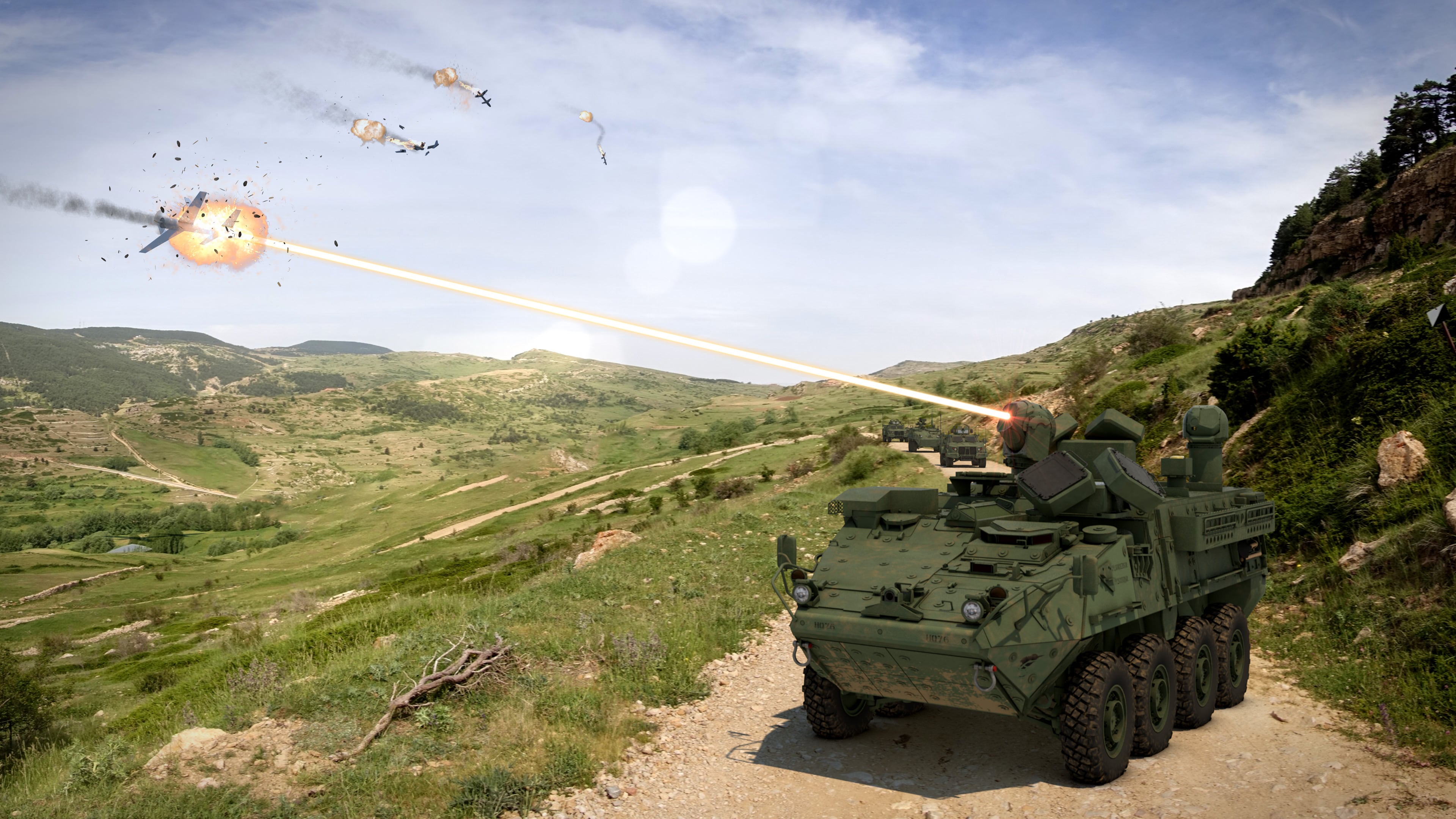WASHINGTON — The U.S. Army has awarded a Boeing and General Atomics Electromagnetic Systems team a contract to develop a 300-kilowatt solid-state laser weapon, according to an Oct. 25 Boeing announcement.
The Distributed Gain High Energy Laser Weapon System will consist of both GA-EMS’ distributed gain laser technology and Boeing’s beam director and precision acquisition, tracking and pointing software. The program will culminate in a demonstration of the system for the Army’s Rapid Capabilities and Critical Technologies Office, according to the statement.
“The high power, compact laser weapon subsystem prototype that GA-EMS will deliver under this contract will produce a lethal output greater than anything fielded to date,” Scott Forney, president of GA-EMS, said in the statement. “This technology represents a leap-ahead capability for air and missile defense that is necessary to support the Army’s modernization efforts and defeat next-generation threats in a multi-domain battlespace.”
The laser system uses two seventh-generation laser heads in “a very compact and lightweight package,” said Michael Perry, GA-EMS’ vice president for lasers and advanced sensors.
“Recent architectural improvements have enabled our single-beam DG Lasers to achieve comparable beam quality to fiber lasers in a very simple design without the need for beam combination,” he added.
GA-EMS and Boeing joined forces last year to build the high-energy laser, announcing its teaming arrangement at the Association of the U.S. Army’s annual conference in October. Under the agreement, the companies planned to create a 100-kilowatt laser that would be scalable to 250 kilowatts, they said at the time. The weapon would be able to operate as a stand-alone system or integrated on ground vehicles, ships and aircraft, the companies said.
RELATED

The RCCTO is already working under a contract modification with a Lockheed Martin and Dynetics team to develop a 300-kilowatt laser capability for the Army’s Indirect Fires Protection Capability, or IFPC, which will defend fixed and semi-fixed assets against cruise missiles, unmanned aircraft, rockets, artillery and mortars using interceptors, a laser weapon and a high-power microwave capability.
The Army teamed up with the Office of the Secretary of Defense on the program to develop a 300-kilowatt laser weapon. A first demonstration of the high-energy laser capability is expected in August 2022, Lt. Gen. L. Neil Thurgood, the RCCTO’s director, told Defense News in an interview at the AUSA event.
The Lockheed and Dynetics team beat out Raytheon in a head-to-head competition in 2019 to develop a 100-kilowatt-class laser weapon as part of the High Energy Laser Tactical Vehicle Demonstrator, or HEL TVD, laser system. The Army modified the contract later to expand the effort to develop the 300-kilowatt capability for the IFPC program.
The contracted awarded to the Boeing and GA-EMS team is not part of the Army’s IFPC-HEL prototyping effort. Instead, the RCCTO received an unsolicited whitepaper through a broad agency announcement and completed a technical evaluation of the whitepaper, resulting in a decision to pursue a proposed demonstration that will determine “the feasibility of distributed gain laser technology for use in future Army weapon systems,” Craig Robin, the RCCTO’S deputy director and Directed Energy Project Office lead, told Defense News in a Nov. 3 statement.
The funded effort will include a preliminary design review and a critical design review phase, he added.
Jen Judson is an award-winning journalist covering land warfare for Defense News. She has also worked for Politico and Inside Defense. She holds a Master of Science degree in journalism from Boston University and a Bachelor of Arts degree from Kenyon College.






